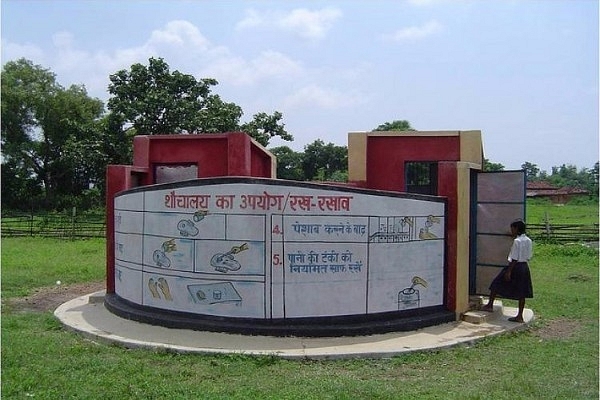Politics
Swachh Bharat Mission: Toilet Coverage In Rural India Crosses 62 Per Cent; 91 Per Cent Use It
- The findings of the Swachh Survekshan Gramin 2017 survey are encouraging.
- Interestingly, it appears that the villages in India are on course to become clean and open defecation free much before the cities.

Swachh Bharat Mission (India Water Portal)
The Swachh Survekshan Gramin 2017 survey has thrown up some encouraging findings. Of the rural households surveyed, 62.45 per cent have access to a toilet, and 91.29 per cent of them use it, pointing to a positive behaviour change. It also speaks volumes of the success of Swachh Bharat Mission (SBM).
The mission was announced by Prime Minister Narendra Modi on 15 August from the ramparts of Red Fort and launched on 2 October 2014 with the goal of achieving an open defecation free (ODF) and clean India by 2 October 2019, Mahatma Gandhi’s hundred and fiftieth birth anniversary. The overall responsibility to implement SBM Gramin lies with the Ministry of Drinking Water and Sanitation, which works with the respective state governments.
To gauge the progress made in household coverage of toilets and their usage, a national third-party verification survey was conducted through the Quality Council of India, in which over 140,000 households in 4,626 villages were studied. Of the households studied, 89 per cent had no litter, and 93 per cent had no wastewater around their premises.
Haryana and Kerala topped the list of states in toilet coverage, which now stands at 99 per cent in both cases. The two states came out as top performers in the northern and southern parts of the country respectively.
As expected, the coverage in eastern states was dismal. Bihar, with only 30 per cent coverage, is the biggest laggard, followed by Jharkhand (37 per cent), Uttar Pradesh (37 per cent) and Odisha (40 per cent).
Surprisingly, the coverage in Andhra Pradesh (57 per cent) and Telangana (61 per cent) is in stark contrast to the economic development in these Telugu states. They fall behind even the so-called BIMARU states like Madhya Pradesh (69 per cent) and Rajasthan (75 per cent).
Apart from households, the survey also covered 4,289 anganwadis. According to the report, 65 per cent of anganwadis had access to a toilet, and 86 per cent of anganwadis had a litter-free surrounding.
Apart from anganwadis, 1,670 public health centres (PHC) were studied, and it was found that 76 per cent of PHCs had access to a toilet and 83 per cent of PHCs had a litter-free surrounding.
SBM rural is moving in the right direction. The progress of SBM urban is comparatively less satisfactory. It looks like villages will become clean and open defecation free much before the cities.
The areas of concern are clear. The centre needs to work with laggard states, especially in the east, to bring them on par with others. What is true on the economic front also seems to be true on the cleanliness aspect: India can’t become a clean country without a clean eastern arm.
Support Swarajya's 50 Ground Reports Project & Sponsor A Story
Every general election Swarajya does a 50 ground reports project.
Aimed only at serious readers and those who appreciate the nuances of political undercurrents, the project provides a sense of India's electoral landscape. As you know, these reports are produced after considerable investment of travel, time and effort on the ground.
This time too we've kicked off the project in style and have covered over 30 constituencies already. If you're someone who appreciates such work and have enjoyed our coverage please consider sponsoring a ground report for just Rs 2999 to Rs 19,999 - it goes a long way in helping us produce more quality reportage.
You can also back this project by becoming a subscriber for as little as Rs 999 - so do click on this links and choose a plan that suits you and back us.
Click below to contribute.
Latest